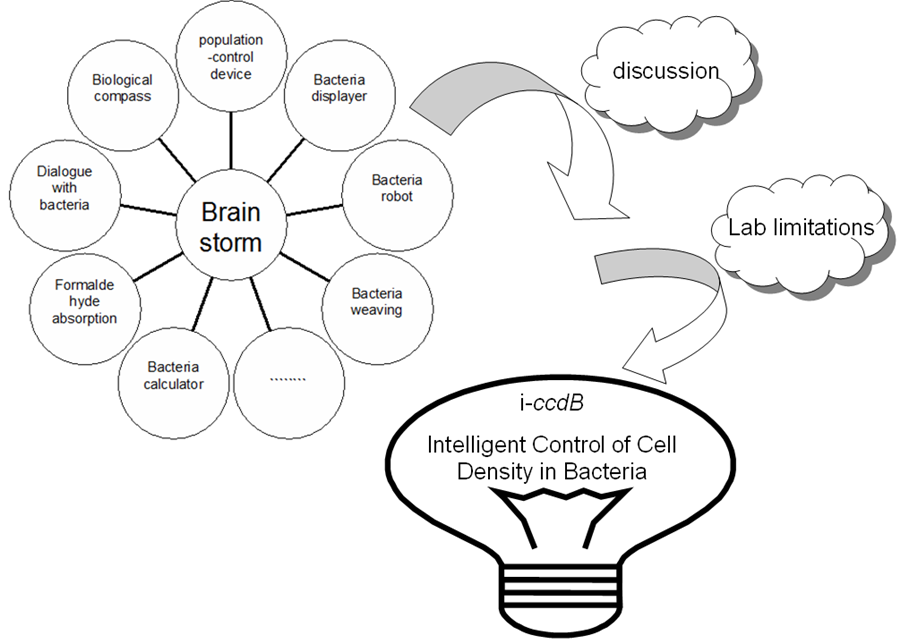Team:XMU-China/Project/Appoach
From 2011.igem.org
(Difference between revisions)
| Line 4: | Line 4: | ||
In December 2010, we began thinking about project for 2011 .We tried to get inspiration from materials provided by iGEM teams in past three years. And we put forward many ideas. For example, we could construct a kind of E.coli which can decompose and detect carbinol harming human body. Another example is that we try to make E.coli have magneto taxis. We collected papers about those ideas. One day,our instructor had Pu’er tea in his office,and said to us that this kind of tea isn’t bitter but sweet because it is fermented. One of team member felt interesting. What’s more, she found that the concentration of bacteria used for fermentation is the most important factor influencing taste of the tea. At present, the usual method controlling the concentration of bacteria is adjusting the concentration of the medium. We thought: if bacteria can keep the optimum concentration by itself, fermentation technology can be simplified. | In December 2010, we began thinking about project for 2011 .We tried to get inspiration from materials provided by iGEM teams in past three years. And we put forward many ideas. For example, we could construct a kind of E.coli which can decompose and detect carbinol harming human body. Another example is that we try to make E.coli have magneto taxis. We collected papers about those ideas. One day,our instructor had Pu’er tea in his office,and said to us that this kind of tea isn’t bitter but sweet because it is fermented. One of team member felt interesting. What’s more, she found that the concentration of bacteria used for fermentation is the most important factor influencing taste of the tea. At present, the usual method controlling the concentration of bacteria is adjusting the concentration of the medium. We thought: if bacteria can keep the optimum concentration by itself, fermentation technology can be simplified. | ||
| - | [[Image: | + | [[Image:XMU_China_134beta.jpg|left|Figure 1: From brainstorm to our project i-''ccdB''|frame|Figure 1: From brainstorm to our project i-''ccdB''.]] |
| + | |||
| + | <html> | ||
| + | <img src="http://partsregistry.org/wiki/images/4/41/XMU_China_block.jpg"> | ||
| + | </html> | ||
| + | |||
== Design == | == Design == | ||
Revision as of 01:14, 6 October 2011
 "
"


